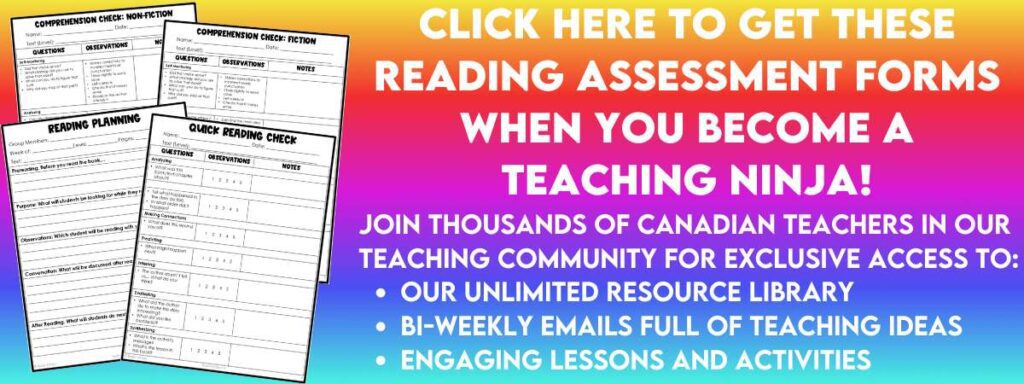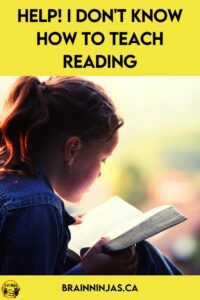
Have you been asked to do Guided Reading or teach reading in your classroom, but have absolutely no experience and don’t even know where to start? We’ve been there. Let us share our combined years of experience that took us from beginning teachers to literacy specialists.
This is the beginning of a series that will get you set up to do Guided Reading in your classroom, but honestly, it is a long game. Take the pressure off yourself now because you’ll have to give yourself time to get this whole how to teach reading thing down. We’ve been teaching reading for over fifteen years and there is always room to improve. There are always new things to learn.
What is Guided Reading?
Basically, the simplest way to describe it: Guided Reading is reading with students and guiding their learning. It is done most commonly with small groups of students who are reading at a similar level or need similar reading skills taught.
Depending on your school or district, you may have materials that are used for Guided Reading. These usually come in the form of leveled texts from a publishing company. Most of the time they come with manuals for teachers and if you have no background in teaching reading, they can be a great place to start because they are somewhat scripted for teachers. Check with your staff to see what materials are available.
To be clear, we are not referring to Guided Reading as a program. Reading with small groups to individualize teaching is a best practice and is just one way to teach reading.
So, before diving into reading instruction, let’s talk about the reading teacher’s mindset.
Let’s talk about some misconceptions about reading.
All teachers know how to teach reading.
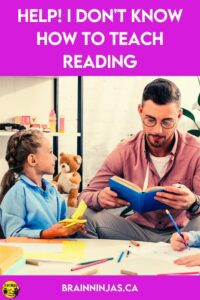
Honestly, teaching students to read is one of your biggest responsibilities, and yet for some reason, it is one of the things we learn the least in university or education programs.
If your school or district provides any type of professional development in this area, we HIGHLY recommend signing up for everything you can. Yes, writing the sub plans is work, but you will need a foundation to help your students.
You can get our Emergency Sub Plans just in case. The plans are already written for you.
- Hoaxes and Ogopogos Emergency Sub Plans for Grades 4-6 can be found in our TpT Store ($USD) or BN Shop ($CAN).
- Ships and Wrecks Emergency Sub Plans for Grades 4-6 can be found in our TpT Store ($USD) or BN Shop ($CAN).
- Sticky Situations Emergency Sub Plans for Grades 4-6 can be found in our TpT Store ($USD) or our BN Shop ($CAN).
- Video Games Emergency Sub Plans for Grades 3-4 can be found in our TpT Store ($USD) or BN Shop ($CAN).
Reading is taught in younger grades, so you won’t have to worry about it in older grades.
Younger students learn to read, but older students often need to read to learn. If they are missing any reading skills or strategies this gap will widen quickly, so you need to be able to identify reading problems and have solutions for them.
Reading is most definitely taught in EVERY grade.
I teach ____ grade so they already know how to read at grade level.
Your class is not going to be filled with students who can all read at the expected grade level. They’re not even going to read at the same grade level. You are going to need strategies for below and above grade level. Even more, you’ll need to be able to teach your competent readers so they stay at grade level.
I have English Language Learners, so I should send them to a lower grade to learn to read.
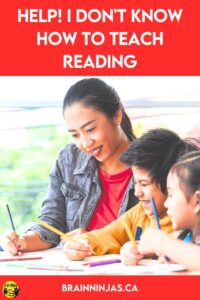
You will need some strategies to teach beginning English Language reading with age-appropriate skills (and this may differ depending on whether or not the student is literate in other languages). Just because your students are reading at a beginner level doesn’t mean they should be reading with younger students or reading books meant for preschoolers.
Reading is something you pick up.
Reading is not an innate skill that kids just “pick up.” While some students learn it easier than others, all students need to be explicitly taught how to read for comprehension so they learn to understand what they read. They also need to learn better strategies since “sound it out” doesn’t work as well for more complex words.
Students who read well in younger grades will continue to read well in older grades.
This is not always the case. As the complexity of the text deepens, students missing comprehension skills could miss the meaning of what they are reading.
Making students read more will make them better readers.
No, they’ll probably just end up hating reading even more. Instead, save the reading for your reading lessons and alleviate some of the reading in other subject areas until your struggling readers have more confidence. You might want to read our post: Strategies for Reluctant Readers.
Reading is a science.
While there is a science to teaching reading, actually reading is not scientific. It’s very subjective. Text is full of bias. Depending on a student’s experiences with reading, vocabulary development, background knowledge, feelings towards reading, format of the text, size of the text, fonts, time of day, vision, processing skills and pretty much anything you can think of can cause bias. This can cause bias in how you assess a student’s reading.
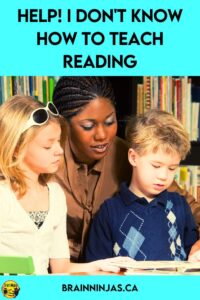
There is a science to teaching reading, but that’s a whole other post for another day.
Guided Reading is Out and Science of Reading is In
These are not mutually exclusive. You can use Science of Reading strategies in your guided reading groups. One is how you organize students and one is how you teach reading. They work together,
What Do You Need to Know About Your Students to Teach Guided Reading?
You need to know your students’ current reading level in order to plan for reading instruction. There are a few places you can get this information.
- If your school tracks reading levels from year to year, you might be able to get some information from the previous year’s teacher. Since you won’t have time to assess every single student at the beginning of the year, this is a good place to start. You can always change the groups later.
- Depending on your school or district, last year’s report card might be able to help you.
- Ask for your school’s range of reading levels for each grade based on the Guided Reading program your school uses (if you have one).
- If you have a reading specialist, literacy specialist or literacy consultant, they might be able to show you how to use diagnostic tools to get you started. In some schools, literacy specialists will even help assess students with or for you.
- If none of these options are available, you may need to read with a student to see what they can do. This will provide you with a starting point.
How to Find a Starting Point for Guided Reading
Prepare
- If you have no idea about a student’s reading level, you’ll just have to stab in the dark until something sticks. We use a basic Quick Check.
- Find the range of levels for your grade level.
- Choose a text in the middle of the range for the grade level from the Guided Reading Program your school owns.
- If it is a long text like a novel, choose the first chapter. After the first page, count out 100 words. Make a photocopy of this page(s) and mark a hundred words. (You do not have to worry about copyright as you can legally copy up to 10% of a book for educational purposes.)
- Read the passage yourself and think of a few questions you can use to check for understanding. Choose a word or two that might cause a student some difficulty understanding its meaning or the context in which it’s used.
- On Reading Assessment Quick Check has a few ready-made, questions you can use to talk with your students after they’ve read a passage.
Choose a Student
- Invite the student to read with you. Choose a spot inside the classroom away from other students. You might be wondering what all your other students are doing at this point. Ask your students to silently read or have a task ready for them to do independently (even if that’s colouring). Explain that you do not want to be interrupted. Everyone will get a chance to read with you
- Before starting the book, do some pre-reading activities. Ask the student to read the title and tell you what they think the book might be about. Look at the cover. What does the cover tell you about the book? Is this book nonfiction or fiction and how do you know?
- Explain to the student that you are checking to see how well they read so you can plan reading lessons in the future. Also, tell them that you may need to read together a few different times until you figure out the right level, so he/she should just relax and do their best. It isn’t a text.
The Student Reads
- Have the student read aloud from the beginning of the text. Follow along on your photocopy and mark the words that are said incorrectly, missed, replaced with the wrong word or if punctuation is missed, ignored or used incorrectly to change the meaning of the text. You’ll analyze this information a little later. Resist the urge to correct anything. If the student asks for a word, mark that on your page.
- When the student struggles with several words (10 or more), this text might already be too difficult. If you already have a lower levelled text prepared, switch to that text, but if not, make a note and let the student return to class explaining that you’ll read with them again soon.
- If the student reads the text generally well, continue to the comprehension questions. This might mean the student needs to read the rest of the passage or chapter silently so there will be enough to discuss. You should have read the same material (and it’s ok to read it at the same time as the student so it is fresh in your mind).
Check for Comprehension
- Ask the student some basic questions about the text to see if they understood what they’ve read. These can be things like: tell me what happened in the story so far; what do you think will happen next? When students answer these questions, how detailed are the answers? How well can they include the information from the book? How much prompting do they need or can they come up with the information on their own?
- If the student struggles to answer the questions, provide any details or can’t remember, try prompting. If the prompting doesn’t help, chances are, this book is too difficult. Try again about two levels lower. If prompting helps, then this is probably instructional level and would be a good level to start.
- If the student seems to “get it,” but lacks detail, the book is probably close to instructional level. This would be a good place to start with instruction.
- If the student nails every question, is detailed and specific and can answer questions that require higher-level thinking, the book is probably a little too easy. Try again with a book two levels higher and see what the results are before assigning the student to a reading group.
- Don’t think of this as a formal test. Think of it more like a conversation between two people who’ve read a book. Can the student talk about the text well enough to show they understand what they’ve read?
I have a general level for each student, now what?
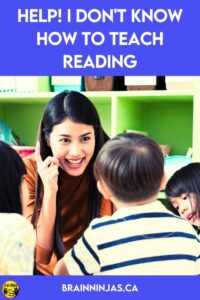
The easy answer: list all your students on sticky notes with their general reading level. Group students together by letter/level/number (depending on your program) so there are 4-6 students in each group.
There will always be students who don’t seem to fit. Maybe you’ll have a group with two students or a group with seven. There is nothing wrong with this, except most programs provide materials for six students in a group. This might take a little extra prep to find enough materials for students.
So, this is about as much as we can fit into this post and we’ve barely scratched the surface. Continue reading this series:
- How to Teach Small Groups and Keep the Rest of the Class Busy
- How to Prepare For Your Guided Reading Groups
- How to Run Your Reading Instruction
Are you looking for other Language Arts ideas?
- Give Your Reading Instruction an Easy Twist
- How to Teach Reading With Book Clubs
- How to Use Google Meet to Run a Book Club
- Research Skills: How to Teach Text Features
- How to Celebrate Poem in Your Pocket Day
- Practical Strategies for Reluctant Readers
- Add Great Content to Your Literacy Lessons
- How to Set Up Your Reading Comprehension Schedule
- Challenge Your Students with Writing Activities Every Day
- 22 Amazing Ways to Use Word Wall Words
- How to Include Different Types of Writing in Your Classroom
- How to Add Some Meat to Your Idioms Lessons
In the meantime, find out about the materials available in your school and get to know all you can about your students’ reading levels. What else do you want to know about Guided Reading? Be sure to let us know in the comments below.

